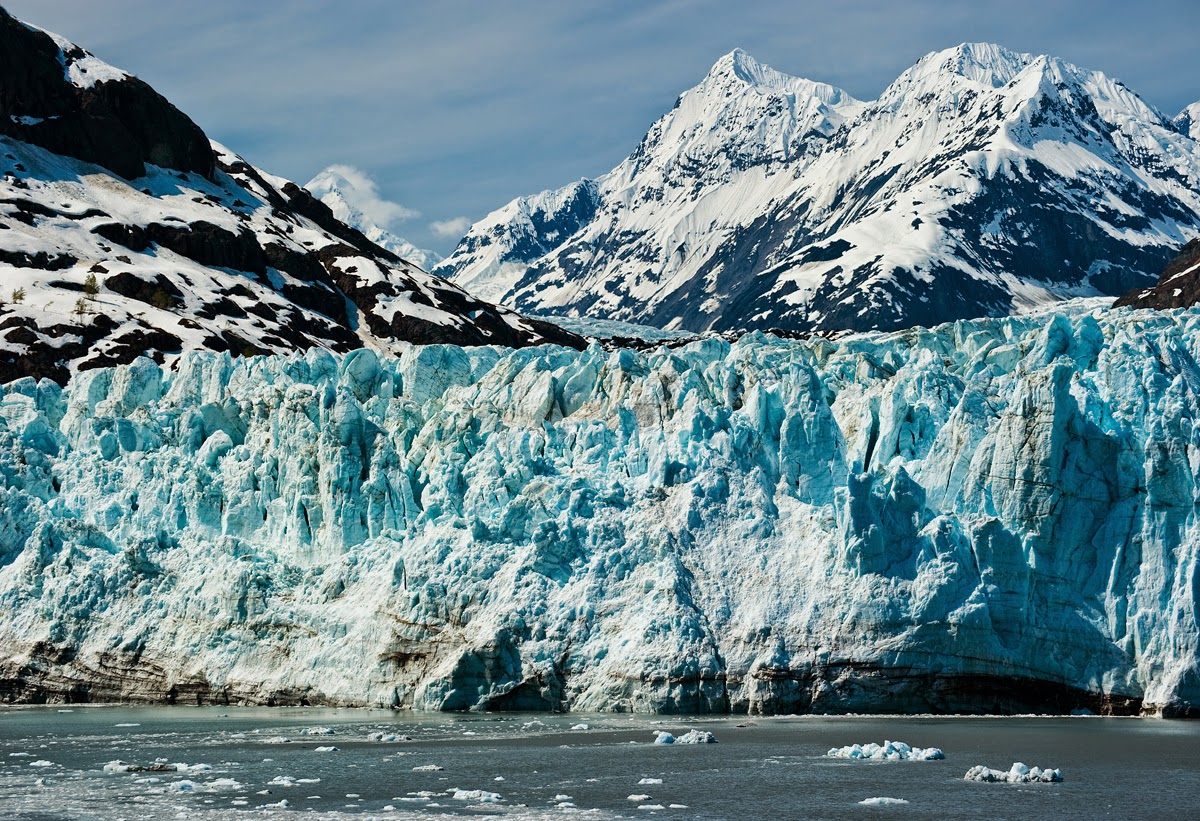One of only a handful of National Parks accessible only by boat or seaplane, Glacier Bay has moved through a series of designations and expansions, beginning as a National Monument in 1925, and becoming a National Park in 1980, encompassing some 3,283,000 acres. It is also a National Preserve, a UNESCO World Heritage Site, and a Biosphere Reserve, as well as the home of a significant population of Hoonah and Tlingit Native Americans.
What can I say about Glacier Bay? Here's a quote from journalist Sherry Simpson, writing in a gorgeous book of photos by Mark Kelly:
"Every one of us who attempts to capture Glacier Bay fails and always will, because this is a place that cannot be preserved by words or photographs or statistics. Look away, and everything becomes new. The light shifts. The ice cascades. The tide ebbs. Glaciers carve up time and leave behind a stony blank space, and then life fills up the space slowly, slowly. This is the world on its way to becoming something else."About 4,000 years ago, the entire basin was a single glacier. Over the centuries, the ice has retreated and geologists now count 50 named glaciers within the park boundaries. From the limited view of the cruise ship, with less than a day to spend, we saw but a handful. The scope of the place is staggering, and the realization of just how much wilderness and habitat surrounds you is mind boggling. It truly cannot be preserved by words or pictures. So, I will share with you some trivial thoughts, some things that surprised me.
One is that some glaciers don't look like what we expect glaciers to look like. Some are barely distinguishable from bare ground.
Another surprise; the turquoise-blue color of the "clean" glaciers. The density of the ice absorbs most of every other color of the spectrum except blue, leaving a distinctive coloration.
Still another surprise, is the noise they make, ranging from booming thunder to sharp cannon-fire.The glaciers are in constant motion, either receding or advancing. The Margerie Glacier is stable, maintaining its 21-mile length from year-to-year, but it still "flows" six feet a day!
And that's another thing. You look at the mass of ice visible above the water and you think that you are looking at many centuries of accumulation. In fact, the ice at the face of the Margerie Glacier was snowfall less than two hundred years ago.
And when glaciers retreat, the earth "rebounds" - rises in elevation measurably. Freed from the billions of tons of overburden, the crust of the earth slowly regains some of the depression that occurred. In Gustavus, just outside the Park, the land is rising almost three inches a year; the high tide line has pushed almost a mile out to sea in the last 50 years.
So much for glacier trivia. On to Ketchikan.

.jpg)

No comments:
Post a Comment